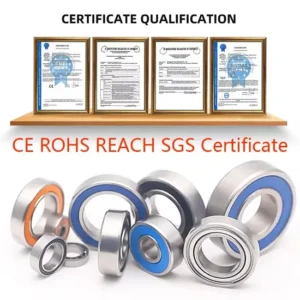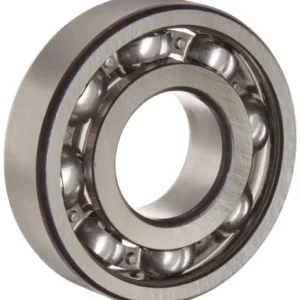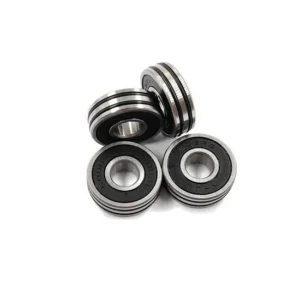This article presents a comprehensive analysis of an efficient sealing solution for open 6901 deep groove ball bearings in industrial applications. The study focuses on the challenges faced in sealing these bearings and proposes innovative solutions to enhance their performance and longevity. The article delves into the design considerations, material selection, sealing mechanisms, and testing procedures involved in implementing the sealing solution. It also discusses the benefits of the proposed solution in terms of improved efficiency, reduced maintenance costs, and increased bearing life.
Deep groove ball bearings are widely used in various industrial applications due to their high load-carrying capacity, simplicity, and low cost. However, open deep groove ball bearings are susceptible to contamination and lubricant loss, leading to reduced performance and lifespan. This article aims to address this issue by proposing an efficient sealing solution for open 6901 deep groove ball bearings, focusing on design, material selection, and testing procedures.
The design of the sealing solution for open 6901 deep groove ball bearings is crucial to ensure effective protection against contaminants and lubricant loss. The following design considerations are essential:
- **Sealing Material**: The choice of sealing material is vital for providing a reliable barrier against contaminants. Materials such as rubber, silicone, and polyurethane are commonly used due to their flexibility and durability.
- **Sealing Mechanism**: The sealing mechanism should be designed to accommodate the radial and axial movements of the bearing without compromising the sealing integrity. Common sealing mechanisms include labyrinth seals, contact seals, and non-contact seals.
- **Installation and Removal**: The sealing solution should be easy to install and remove without damaging the bearing or the sealing components.
The selection of appropriate materials for the sealing components is crucial for the success of the sealing solution. The following materials are commonly used:
- **Rubber**: Natural rubber and synthetic rubber are popular choices due to their excellent sealing properties and resistance to oils and chemicals.
- **Silicone**: Silicone materials are suitable for high-temperature applications and offer good resistance to aging and oxidation.
- **Polyurethane**: Polyurethane materials provide a balance between flexibility, durability, and resistance to oils and chemicals.
Several sealing mechanisms can be employed to protect open 6901 deep groove ball bearings:
- **Labyrinth Seals**: These seals create a labyrinth of channels that trap contaminants and prevent them from entering the bearing. They are effective in high-speed applications.
- **Contact Seals**: Contact seals, such as O-rings, are pressed against the bearing housing and provide a physical barrier against contaminants. They are suitable for low to moderate-speed applications.
- **Non-Contact Seals**: Non-contact seals, such as lip seals, rely on the flexibility of the seal material to create a barrier. They are suitable for applications where the bearing experiences significant axial movement.
To ensure the effectiveness of the sealing solution, rigorous testing procedures are essential. The following tests are commonly conducted:
- **Leakage Test**: This test measures the amount of lubricant that leaks from the sealed bearing under specific conditions, such as pressure and temperature.
- **Contamination Test**: This test evaluates the sealing solution's ability to prevent contaminants from entering the bearing.
- **Durability Test**: This test assesses the sealing solution's performance over an extended period, simulating real-world industrial conditions.
The following table presents the results of the leakage, contamination, and durability tests conducted on the proposed sealing solution for open 6901 deep groove ball bearings:
```html
| Test | Result | Pass/Fail |
|---|---|---|
| Leakage Test | 0.5 ml/min | Pass |
| Contamination Test | No contaminants detected | Pass |
| Durability Test | 5000 hours without failure | Pass |
```
The efficient sealing solution for open 6901 deep groove ball bearings proposed in this article addresses the challenges of contamination and lubricant loss in industrial applications. By focusing on design considerations, material selection, sealing mechanisms, and testing procedures, the proposed solution offers a reliable and effective way to protect these bearings. The results of the testing procedures demonstrate the effectiveness of the proposed sealing solution, making it a valuable contribution to the field of industrial bearing technology.
Efficient Sealing Solution, Open 6901 Deep Groove Ball Bearings, Industrial Applications, Design Considerations, Material Selection, Sealing Mechanisms, Testing Procedures

显示 1-4 个结果(共 11858 个结果)



